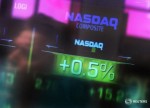
- All Instrument Types
- Indices
- Equities
- ETFs
- Funds
- Commodities
- Currencies
- Crypto
- Bonds
- Certificates
Please try another search

Balance Sheet
What is a Balance Sheet?
A company’s balance sheet captures the overall financial state of the enterprise at a specific moment in time. It includes the assets—what a company owns; liabilities—its debts; and owners’ equity—both insiders and shareholders.
The balance sheet is the most important of the three main financial statements used to determine the financial condition of a company, the others being cash flow and income statements.
The balance sheet, income statement, and cash flow statement must be included with financial reports to shareholders and government regulators. Private businesses such as partnerships and sole proprietorships are not required to prepare or file these reports, but they can be very helpful internal documents for management, and as a way of determining the health of a private business.
The fundamental balance sheet equation is:
Total assets = total liabilities + shareholder equity
The total assets of a company must equal the sum of total liabilities plus shareholder equity (capital in excess of liabilities is considered shareholder equity).
For instance, if a company generates $10,000,000 but has liabilities of $8,000,000, the excess $2,000,000 of capital is obligated to the shareholders--if the company had to liquidate its assets. As such it is added to the liabilities line.
Balance Sheet Breakdown
When looking at the balance sheet, “current assets” are listed first. These are liquid assets, listed in order of liquidity, which can be converted to cash quickly, roughly within one year or less. This would include cash and cash equivalents, accounts receivables, inventory, and pre-paid expenses.
The next section is “total assets.” These are holdings that cannot be easily converted to cash within a year. This includes land, equipment, marketable securities, and intellectual property.
Similarly, in the liabilities section of the report which generally follows asset listings, “current liabilities” are displayed first. This includes debt obligations that are due within the next year, in order of date due, such as rent, interest outstanding in the year ahead, wages payable, and dividends payable. “Total liabilities” come next. This includes interest and principal on bonds, deferred taxes, and any pension liabilities.
“Total Equity” follows. Sometimes referred to as “shareholder equity,” it’s also known as “net assets” because it includes assets attributable to the shareholders of the business once the liabilities have been paid off.
This section includes retained earnings, treasury (common) stock, preferred stock, and additional paid-in capital. Retained earnings, to be clear, are funds used to reinvest in the business or pay off debt. Treasury stocks are shares the company has either repurchased or never issued, which is useful when defending against a hostile takeover.
Note that preferred stock, which is different in character from a common stock, is a separate line item. Additional paid-in capital refers to the investment shareholders have added to the company beyond common or preferred stock accounts.
Finding Balance Sheet Information on Investing.com
At Investing.com, the balance sheet for every company is located under the Financials tab of the main page of every stock, e.g. Facebook (NASDAQ:FB).
A tab at the top left of the section allows users to toggle between Annual or Quarterly figures. Though the page defaults to a detailed view, clicking “Collapse All” at the upper right corner of the section compresses the listing to just the main headings.




